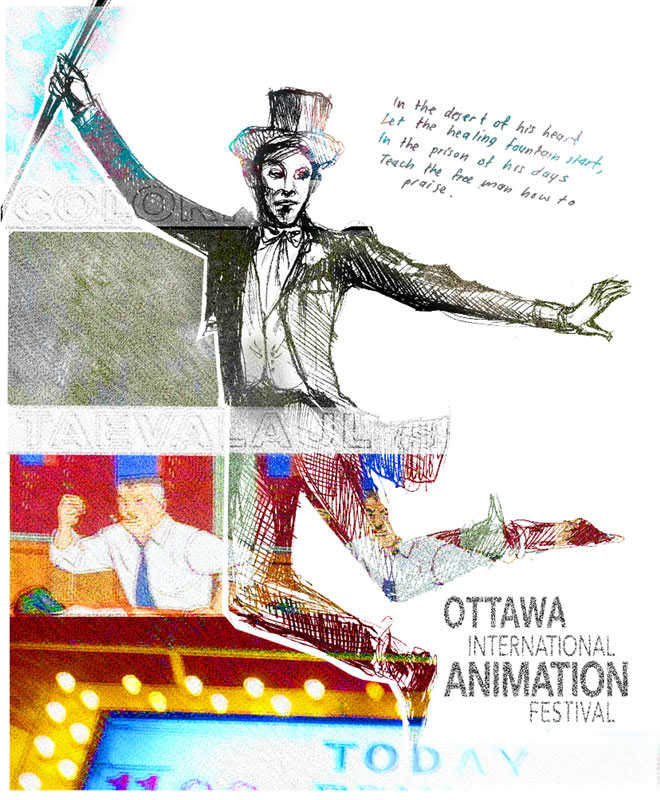
OIAF comes to town
FOR THOSE WHO didn’t know, the Ottawa International Animation Festival (OIAF) is the largest animation festival in North America, and it’s growing every year. There were over 2,000 entries in the 2011 competition, but only 151 made the cut. Taking place from Sept. 21–25, the festival includes a final selection of children’s films, shorts, and independent projects. With a variety of films being shown, the OIAF has clearly set out to show its audience that animation is far more than just creating cartoons.
“The primary goal of the OIAF is to introduce viewers to another realm of animation that they don’t have access to on television or in cinemas. These are more personal types of animation,” says Chris Robinson, artistic director of the festival.
“They’re often made by individuals and self-financed. There’s a world of more personal, poetic, experimental, and artistic animation out there that most people can’t really see anywhere. This world of animation is probably more aligned with the arts than it is with mainstream ‘cartoons’.”
Instead of relying on a panel of judges or random lottery selection for the films, Robinson and a couple of his colleagues decide which films are shown.
“I head up the selection. I’ll watch all the 2,000 submissions, then I divide the films into no, maybe, and yes piles. The no films are removed from the process. The yes films go on to final round. The maybe films go [through] to a second round. This time they are viewed by two of my colleagues. They watch the films, provide detailed feedback, and then I make the final decisions based on their input,” he says.
Robinson acknowledges that this may not be the most objective way to choose the films, but he does believe that it is the best way for the OIAF to do so.
“The process is flawed and subjective. Other festivals might use selection committees. They’ll have three, four, or five animation professionals decide which films go into competition. That approach seems more democratic, but it has its flaws as well. People tend to believe that juries are these impartial witnesses. It’s a complete lie. We are all biased and have our desires and have our beliefs,” explains Robinson.
David Borish is a 17-year-old Ottawa native whose stop-motion film Paper Man has earned a spot amongst OIAF elites. Prior to his recent success, Borish was your average high-school student who created stop-motion films purely for the love of the craft.
“I created my animation for fun in the beginning. After realizing it was pretty good, my teacher was the one who told me about the OIAF. I didn’t know my chances, but I sent it in anyway. I got the call that I [was accepted], and although I was happy, I had no idea what to expect,” says Borish.
A stop-motion film is when an object is manipulated to make it seem as if it moves on its own. Borish’s Paper Man is comprised of over 700 pictures of strips of paper. As far as the work goes, that means a lot of cutting paper, planning, and cutting more paper. Borish admits this style of filmmaking is exhaustive and tedious.
“[The production process] wasn’t necessarily difficult, but there [was] a lot of pre-planning that [went] into it. For my style, I had everything planned out before any pictures were taken. I exercised a lot of patience, and a couple times it was very frustrating when things didn’t go my way, but I pulled through.”
Borish’s work has not gone without recognition. His work is among one of five to appear in the high-school category of the 2011 OIAF Official Competition.
The festival will include film screenings, exhibits, and workshops. First-time festival goers can look forward to feeling an array of emotions and having a good time.
“People should always come to the festival with an open mind and expect the unexpected,” said Robinson. “If someone is coming to the festival for the first time and only really knows animation through TV shows (Family Guy, Simpsons) or movies (Pixar, Disney), then they should expect to have their minds slowly blown wide open.”
—Tina Wallace and Sofia Hashi





